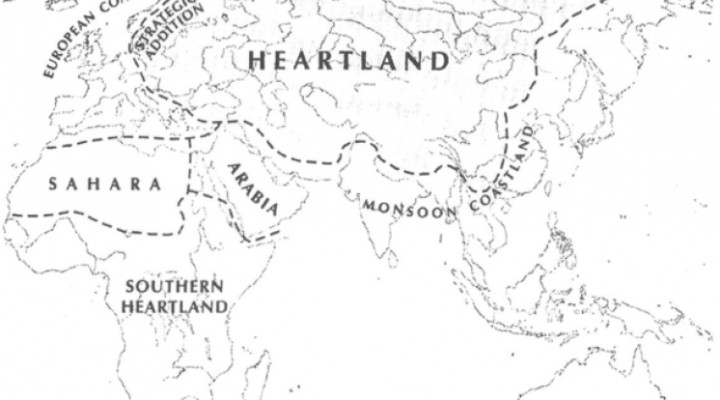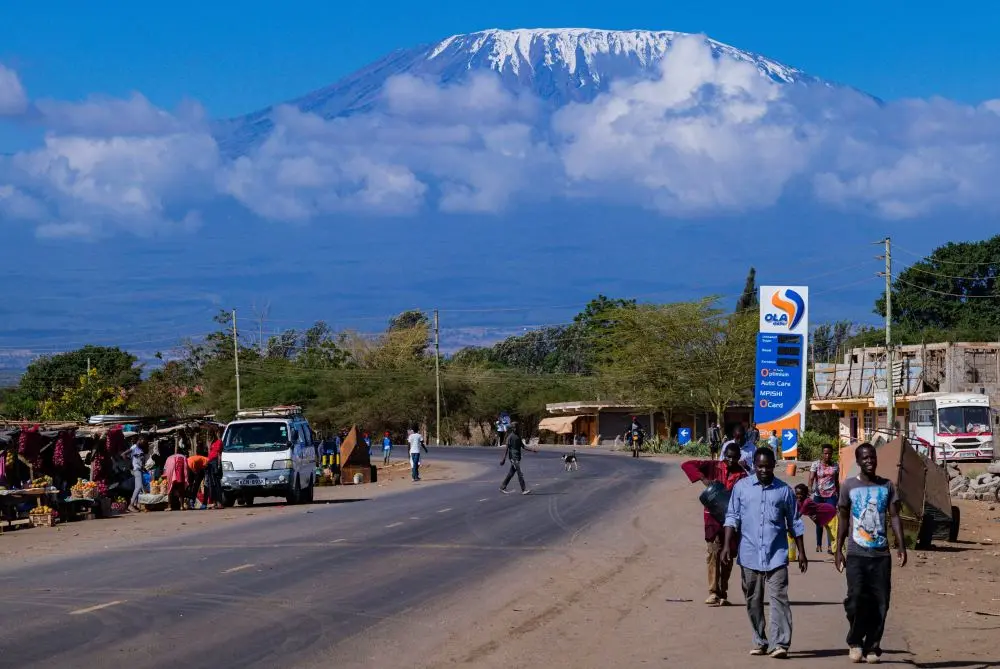Southern Heartland

Recently, there has been a growing global interest in cooperation with African countries. The West’s weakened authority on the continent may be one of the reasons for the shift towards the South and East. Multiple economic, political, strategic and geopolitical factors are also contributing to such reorientation.
Do not let Mercator’s projection maps deceive you — Africa is significantly larger than Europe in actual size. It’s a huge continent covering more than 20% of the Earth’s landmass and has 54 independent nations. These are vast areas that can be utilized for agriculture, deposits of natural resources and political support, such as voting in the UN.
This continent suffered greatly from European colonialism. Despite the fact that Africa has given birth to numerous ancient civilizations and powerful states, such as Ancient Egypt and the Ethiopian Empire (Abyssinia), the continent’s people have still suffered from oppression and external rule. First directly and then indirectly. The entire XX century was spent in the attempts of many countries on this continent to free themselves from colonial dependence. And the continuation of this struggle (already from the shackles of neo-colonialism) we see to this day.
There is no need to remind you that Eurasia has an area called the Heartland, the geographical axis of history. Both of these terms were introduced by British geographer Halford Mackinder. For some reason, many people forget that he was also talking about a second Heartland of the World Island. By World Island he meant Eurasia and Africa connected by the Arabian Peninsula. In contrast to the Eurasian Heartland, he proposed to call it the South Heartland because of its location on the African continent. Certainly, he talked mainly about the need to control Northern Heartland to dominate Eurasia and ultimately the World Island.
And given the way Anglo-Saxon strategists develop their foreign policy, follow their doctrines and idee fixe, it becomes clear why the US is so interested in Africa. Southern Heartland to be exact. Because in world geopolitics, these two Heartlands have correlations.
According to Mackinder, the Southern Heartland stretches from Sudan to the western tip of Gambia on the Atlantic coast and covers the part of Africa below the Sahara to rainforests that extend equatorially. The northeastern tip of the Southern Heartland is Ethiopia and Somalia, which have access to Yemen, and there is a passage through the Arabian steppes to the Northern Heartland. Mackinder speaks of certain similarities between the two designated massifs with respect to ease of transportation links, river systems, and fertile land.
Including the importance of historic Syria and Palestine as a link between Africa and Eurasia. In the context of present conflicts in Syria and the Gaza Strip, and also the US’ efforts to maintain control over Lebanese sovereignty and to employ Israel as its proxy in West Asia, this indicates that Washington still relies on the Mackinder formula to shape its strategy in the area.
Now, let’s examine the current political situation in Southern Heartland. Beginning with the eastern part, we discover states encountering a crisis or conflict. Sudan, with direct US involvement, was divided into two parts, one of which is now in civil war. South Sudan has also gone through conflict and inter-ethnic clashes. The conflict in northern Ethiopia lasted from 1961 to 1991, leading to the formation of Eritrea. However, following the acknowledgment of independence in 1993, war between the states broke out. And more recently in Ethiopia, internal conflict has erupted in Tigray province. Federation officials have accused the United States of supporting rebels and separatists. Somalia has faced several conflicts, causing its economy to be in a critical state. The US dollar is used as the currency there, clearly indicating external dependence. Only Djibouti, following its liberation from France, managed to become self-sufficient to some extent. However, it is home to military bases of the United States, France, Italy, Japan, and more recently China. Their balanced approach has two meanings.

And then, if you move West, in the South Heartland are Chad, Niger, Burkina Faso, and Mali. Chad has been troubled by Islamic militants and one of the operations against them in 2021 killed the country’s president. In October 2022, riots took place across the nation. Earlier this year, the government nationalized the assets of Exxon Mobil’s subsidiary. Additionally, uranium is extracted in the country with the involvement of the French firm Ogapo S.A, which also has assets in Niger, Nigeria, Gabon, and Namibia. Currently, France is still present in the country, and French military personnel were recently transferred there from Niger.
Niger, Burkina Faso, and Mali have recently agreed to create an Alliance of Sahelian States. This was after military coups and the virtual expulsion of the French from these countries. Despite the threat of ECOWAS nations (excluding those who withdrew) to deploy troops to Niger, they ultimately refrained from doing so.
Guinea, which has access to the ocean and experienced a military coup in 2021, has joined the new Sahel Alliance.
And in neighbouring Senegal, there is also a strong feeling against colonialism and France. The first leader of this nation, Leopold Cedar Senghor, was among the advocates of Negritude, a political philosophy that outlined the unique development of African people.
So, we see frequent issues in the South Heartland, and Western influence manifests as evident neo-colonialism and a series of military installations.
The recent military takeovers had a distinct focus on national liberation, and there may be a possibility that this trend will persist due to external forces struggling to handle crises and support local governments.
But the Rimland (coastal zone) of Africa to the north is also directly connected to South Heartland. For instance, Libya’s assistance partially ensured the security of Niger and Chad until 2011. However, an outside-led rebellion destroyed the Libyan Jamahiriya, resulting in a civil war. The domino effect has caused problems with Islamists in Chad and Niger, but also in Tunisia and Egypt. Algeria has adopted a strategically correct policy line and continues to cooperate closely with Russia. Meanwhile, relations with Spain, which received natural gas from there, deteriorated. In the northwest, there is a triangle of contradictions between Mauritania, Morocco, and Algeria over the status of Western Sahara. Algeria backs the Frente Polisario, but Morocco has control of Western Sahara, where the biggest phosphate reserves are found. People in Western Sahara believe they own the phosphate and call Morocco’s mining and selling of it unlawful. By the way, Donald Trump recognized Morocco’s sovereignty over Western Sahara in 2020 in exchange for establishing diplomatic relations between Morocco and Israel. All of these factors affect countries below the Sahara.
If we consider the region below South Heartland itself, closer to the equator is the Central African Republic. Nearby is one of the continent’s giants, the Democratic Republic of Congo, which represents great potential. Neighboring Angola has also seen rapid development since even after Portugal left. Now China is investing in development of infrastructure and industry in this nation. Overall, Beijing seeks to establish transportation hubs for its Belt and Road project and secure access to natural resources in African countries.
Russia is also a welcome guest in Africa. Mainly due to the favorable legacy of the nation’s involvement in shaping the political and economic fate of various African countries.
South Africa has interacted with Russia in the BRICS format for many years. Now, from January 1, 2024, the club will grow to involve Ethiopia situated in Africa.
The political environment in Africa is changing. External perspectives are shifting, and independent thought is developing, depending on Negritude, Pan-Africanism, African socialism, and African humanism. A new trend called Afropolitanism has surfaced and is creating a transcontinental identity. Clearly, this way of thinking relates to conditions necessary for Africa to become a unique player in a world with multiple powers.
https://orientalreview.su/2023/11/17/south-heartland/
 TheAltWorld
TheAltWorld 
0 thoughts on “Southern Heartland”